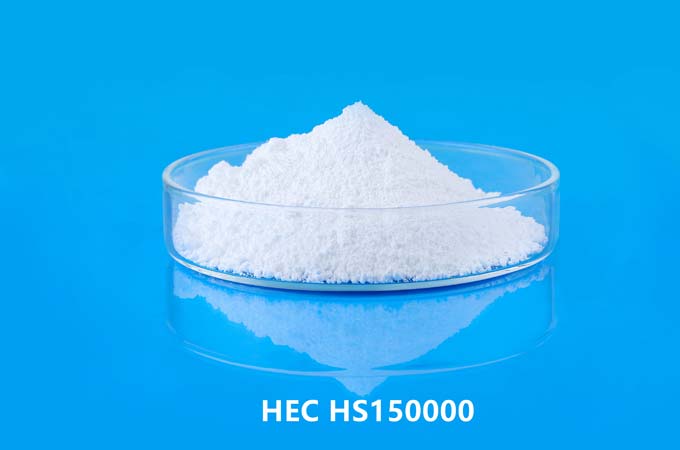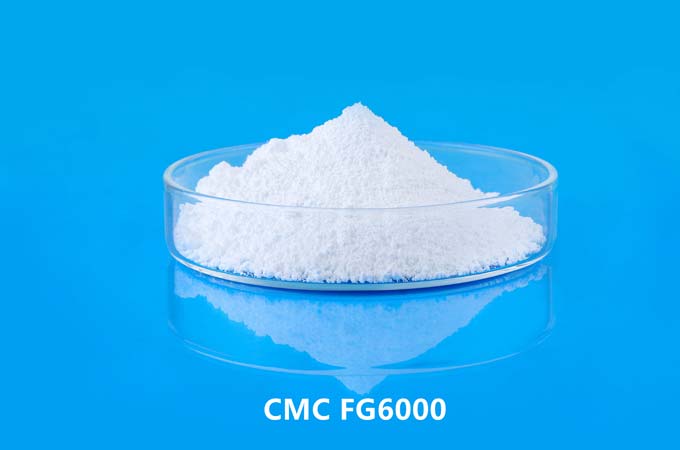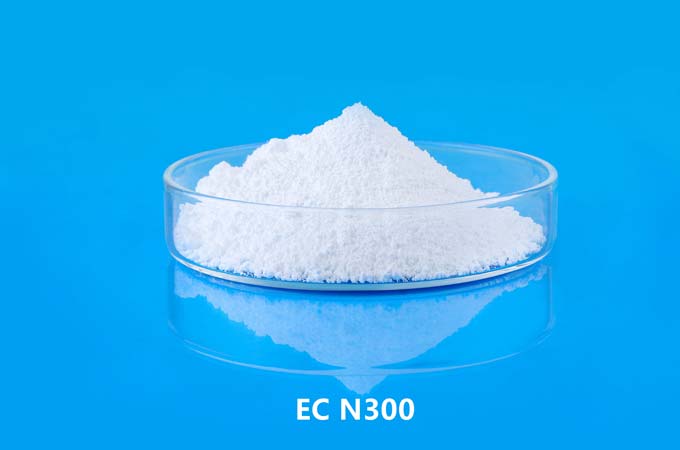Hydroxypropyl methylcellulose and methylcellulose are water-soluble ethers with excellent performance, and are suitable for architectural coatings as retarders, water-retaining agents, thickeners and binders. HPMC and MC have been used in gypsum, cement, lime and mortar. It acts as retarder and water retention agent in cement proportioning; while in concrete composition and mortar, it can improve viscosity and shrinkage, enhance cohesion, control setting time of structural grade cement, increase initial strength and flexural resistance strength. Due to its water-retaining effect, it can reduce water loss on the concrete surface, avoid cracks at the edges, and improve adhesion and construction performance. Especially in construction, the setting time can be extended and adjusted,
The Role of Hydroxypropyl Methylcellulose in Building Materials
1. Processability - plasticity
After adding hydroxypropyl methylcellulose, the workability of gypsum is significantly improved. The mortar without hydroxypropyl methylcellulose is loose and easy to lose water, but after adding hydroxypropyl methylcellulose, the mortar seems to be "oily", which makes the wall joints full and the surface smooth; tiles or bricks are closely connected with the base Combined, prolonging the operation time, suitable for large-area construction.
2. Water retention - strength
Cement or gypsum based products can only gel through hydration reactions. Water turns silicate in cement into composite hydrate, and turns calcium sulfate anhydrous and calcium sulfate hemihydrate into calcium sulfate dihydrate in industrial gypsum, giving these products a certain strength. Without water, there can be no reaction and no force. Especially the interface in contact with cement mortar, gypsum, and binder loses water, and this part has no strength and almost no bonding. Generally speaking, the surfaces in contact with these materials are all adsorbents, which more or less absorb some water from the surface, resulting in incomplete hydration of this part, thereby reducing the bonding strength between the plaster and the wall.
One of the main functions of hydroxypropyl methylcellulose is to increase the water retention of building materials, greatly improving its bond strength and shear strength. The water retention of hydroxypropyl methylcellulose becomes better and better with the increase of viscosity.
3. Bonding
Adding hydroxypropyl methylcellulose can significantly improve the bonding force of cement mortar, plastering and binder, especially the initial bonding force, so as to ensure that tiles or ceramic tiles are not slipped, plastering and wall surface; brick and The mortar holds together firmly. The amount of hydroxypropyl methylcellulose should not be too much. Too much will make the paste adhere to the construction tools on the one hand, which will bring inconvenience to the construction, and on the other hand, it will also cause void defects in plastering and caulking .
4. Retarding effect
Hydroxypropyl methylcellulose can be used as a retarder for cement-based building materials (such as mortar, gypsum, adhesives, caulking materials, etc.). If a particularly long construction time is not required, such a retarding effect is sufficient to meet the needs of use. Hydroxypropyl methylcellulose also has a certain retarding effect on gypsum-based products.
5. Air-entraining agent
After adding hydroxypropyl methylcellulose, many tiny bubbles will be generated inside the material, showing a honeycomb structure. Small air bubbles are like "lubricant", which can have good construction performance. At the same time, the honeycomb structure blocks the capillary action produced by the original cement hardening and prevents the penetration of water, so that the walls, tiles, cracks, etc. have a good waterproof effect. The function of the air-entraining agent also improves the antifreeze and heat resistance of the product, increases the effect of heat insulation and sound insulation, and reduces the bulk density of the product at the same time.
Building Materials That Can Use Hydroxypropyl Methylcellulose
1. Cement mortar
During the use of cement mortar, due to the strong water absorption of the brick wall and the high sand content of the mortar, it is very important to ensure good water retention. Otherwise, the bricks will easily absorb the moisture in the mortar, resulting in partial dehydration of the mortar, making it difficult for the cement to fully hydrate. The bond strength of mortar composed of sand, lime and cement is very low, but the bond strength can be significantly improved by adding hydroxypropyl methylcellulose. Even if eccentric loading or horizontal loading occurs significantly, the bending tensile strength and shear strength will be relatively high.
The amount of hydroxypropyl methylcellulose added should be determined through experiments. Adding too much will produce too many air bubbles in the mortar and reduce the compressive strength. But if used properly, the use of cement mortar will be fundamentally improved.
2. Tile Adhesive
Since tile adhesives must have a very high bond strength between the substrate and the tile, the adhesive is subject to two aspects of water absorption, the substrate (wall) surface and the tile. With ceramic tiles, the quality varies widely. Some have large pores and high water absorption of tiles, which will destroy the bonding performance of tile adhesives. In this case, water retaining agent is particularly important, adding hydroxypropyl methylcellulose can well meet this demand.
3. Gypsum
For gypsum (plastering paste), workability, plasticity and initial viscosity are several important properties. Even adding a very small amount (a few parts per thousand) of hydroxypropyl methylcellulose can significantly improve these properties. In cement-based and gypsum-based plasters, water is essential for final hardening. Like cement mortar, the water-retaining properties of cellulose give the cured stucco a high bond strength.
4. Bonding plaster, caulking plaster and plaster-based finishing materials
Gypsum products have the advantages of light weight, heat preservation, fire prevention, and indoor humidity adjustment, and are used more and more widely. The amount of matching bonding plaster and caulking plaster is already very large. The preparation of these materials requires the addition of an appropriate amount of hydroxypropyl methylcellulose as a water-retaining agent and a binder to fully hydrate the gypsum, ensure sufficient cohesive force, and prevent cracks. Currently, gypsum-based finishing materials (finishing gypsum or plastering gypsum) have gradually replaced other finishing materials. Usually 0.2% hydroxypropyl methylcellulose is added to these materials, which can greatly improve the construction performance, prevent the occurrence of cracks, and make the plastering of the wall smooth.
5. Other building materials
Hydroxypropyl methylcellulose has been widely used in color coatings, greatly improving the performance and decorative effects of these products. Hydroxypropyl methylcellulose can play an important role where adhesion, water retention and improved construction performance are required. Hydroxypropyl methylcellulose has been used in many domestic building materials, and has achieved good economic and social benefits. With the increase of production capacity and variety, the improvement of product quality and the decline of price, the application in building materials will be more extensive.
All-round use of hydroxypropyl methylcellulose
Mortar: Using cement mortar as the interior and exterior wall coating can increase the adhesion of sand particles to the wall and improve the construction performance of the mortar. The construction method is similar to that of plaster paint for interior walls.
Bonding tiles: During construction, the tiles do not need to be soaked in water in advance. The construction method is similar to the conventional method, and the wall does not need to be sprayed with water. The use of HPMC can significantly improve the bonding fastness of the tiles, the slurry construction period is longer, the appearance is fine and uniform, and the construction is convenient.
Concrete: HPMC can be used as pipe drag reducer and surface water retaining agent, which can greatly improve initial setting strength.
Adhesives and rubber powder for construction: For adhesives for construction and RDP (redispersible polymer powder for construction), HPMC is used as an auxiliary bonding material, which not only improves the bonding performance, but also enhances its anti-mold performance .
Cement products: In the production process of gypsum cement pipes or plates, a small amount of HPMC, MC or series are added as water regulators, water retention agents, retarders or binders, so that the products will not dehydrate under the pressure and shear of water. Shear force, while improving the compressive strength of the product.
Coating industry: HPMC and MC are widely used in coatings due to their excellent performance. For example, it is used as a film-forming agent, thickener, emulsifier, stabilizer, etc. in latex paint and water-soluble resin paint, so that the coating film has good wear resistance, leveling and adhesion, and can improve surface tension and pH. Stability and compatibility with metallic pigments. HPMC and MC have water retention, so they have good brushing and leveling properties, good storage stability and good blending performance with organic solvents.
Construction glue: high-viscosity cold water instant product produced, with good cold water dispersibility and high viscosity. Its gelation time can be customized according to customer needs. It does not delaminate or lose viscosity after standing, making it ideal for construction adhesives.
 English
English 日本語
日本語 français
français Deutsch
Deutsch Español
Español italiano
italiano русский
русский português
português العربية
العربية Türkçe
Türkçe Nederland
Nederland



